In pictures: India celebrates Holi festival of colour
People seen rejoicing on the streets of India with colours

Your support helps us to tell the story
From reproductive rights to climate change to Big Tech, The Independent is on the ground when the story is developing. Whether it's investigating the financials of Elon Musk's pro-Trump PAC or producing our latest documentary, 'The A Word', which shines a light on the American women fighting for reproductive rights, we know how important it is to parse out the facts from the messaging.
At such a critical moment in US history, we need reporters on the ground. Your donation allows us to keep sending journalists to speak to both sides of the story.
The Independent is trusted by Americans across the entire political spectrum. And unlike many other quality news outlets, we choose not to lock Americans out of our reporting and analysis with paywalls. We believe quality journalism should be available to everyone, paid for by those who can afford it.
Your support makes all the difference.Millions of people in northern and central parts of India on Monday celebrated the Hindu festival of colours, which marks the beginning of spring.
Holi is celebrated at the end of winter, on the last full moon day of the Hindu luni-solar calendar month of Falgun.
Hindus in the country and abroad usher in the new season with festivities including bright colours, sweets and by offering prayers to their revered gods.
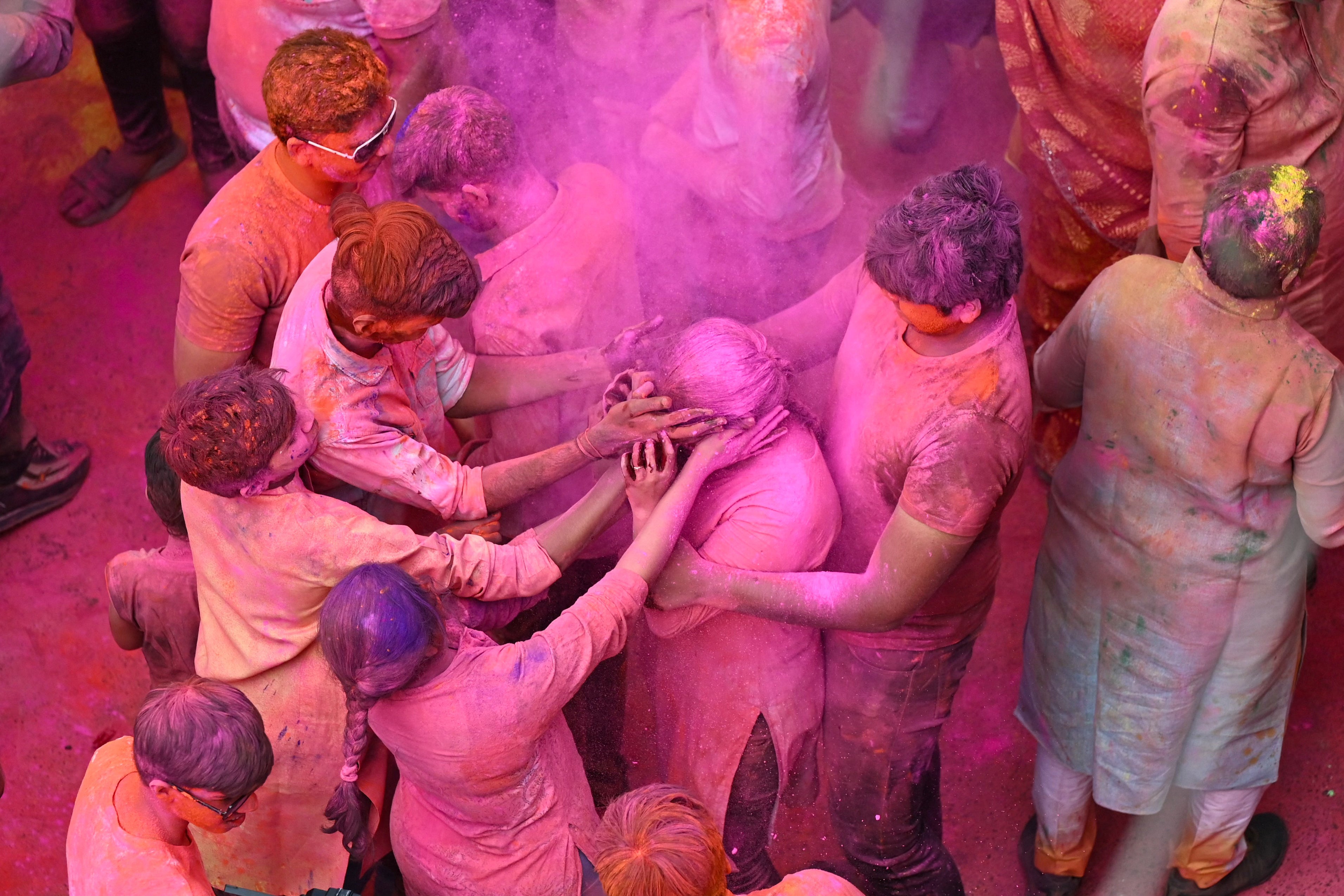
People drenched in water were seen smearing colours on each other's faces, singing and dancing to the beat of drums on the streets.
The festival is typically marked with either family or community-based parties but it is not uncommon for strangers to also throw colour and water balloons at each other in the street. This has led to rising concerns over women’s safety during the festival, where women have complained about being harassed and groped by men under the pretext of applying colours. A Times of India survey of 111 women in 2021 found that one in three had experienced such harassment at Holi.
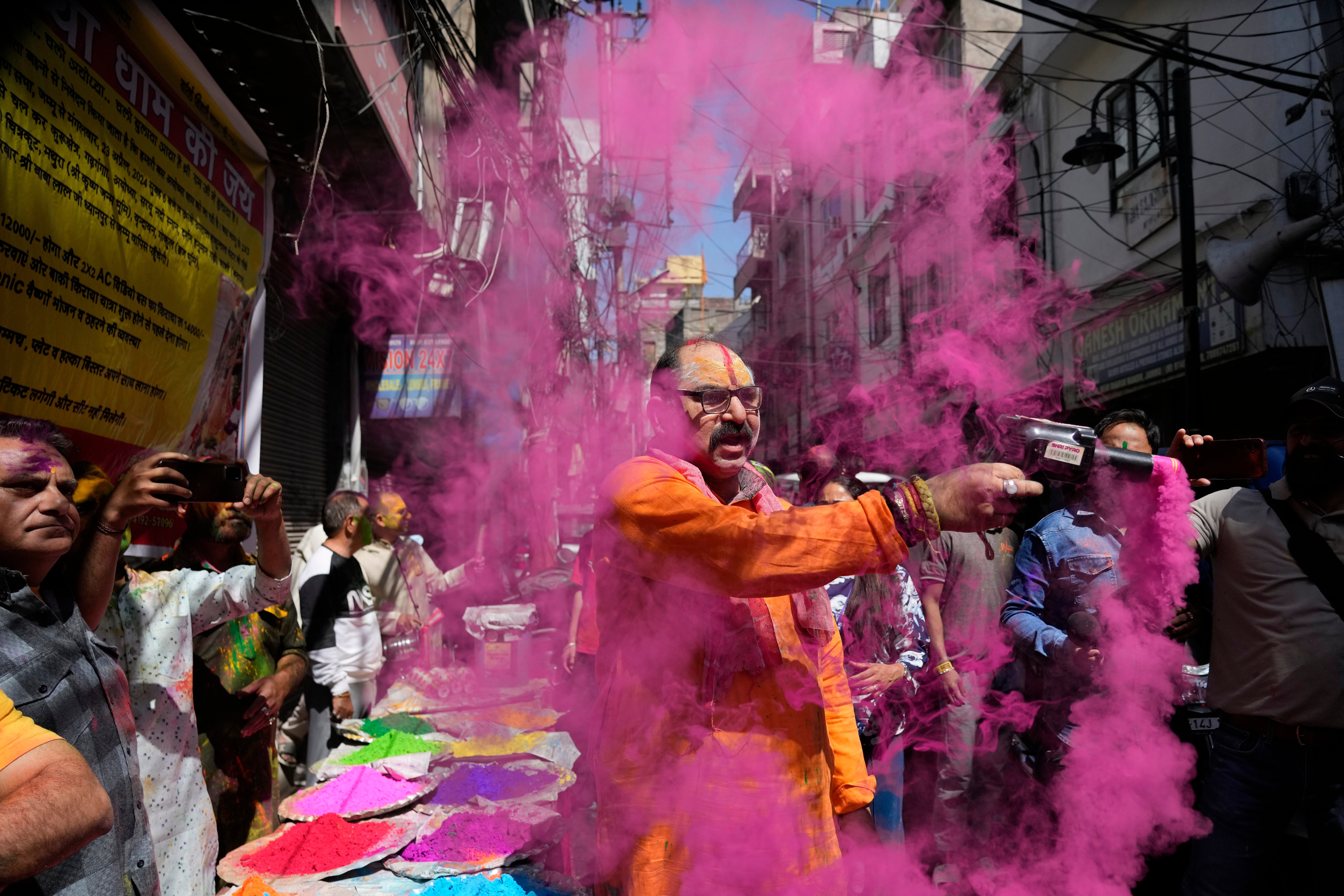
In addition to marking the arrival of spring, Holi also celebrates fertility, colour, love, and the triumph of good over evil.
The origins of the festival can be found in various legends in Hindu mythology, one of which tells the story of a demon, Holika, and her brother, King Hiranyakashipu.
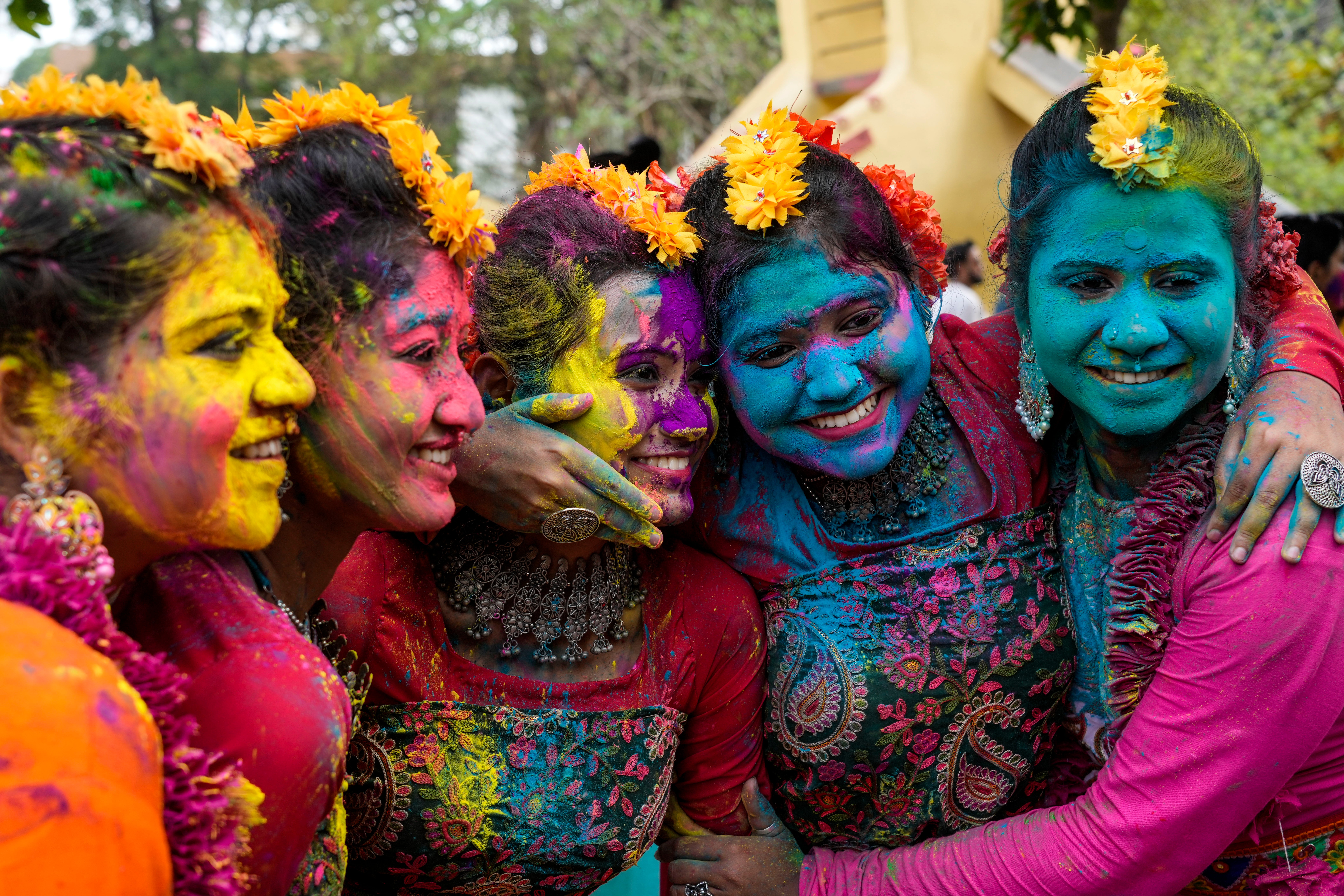
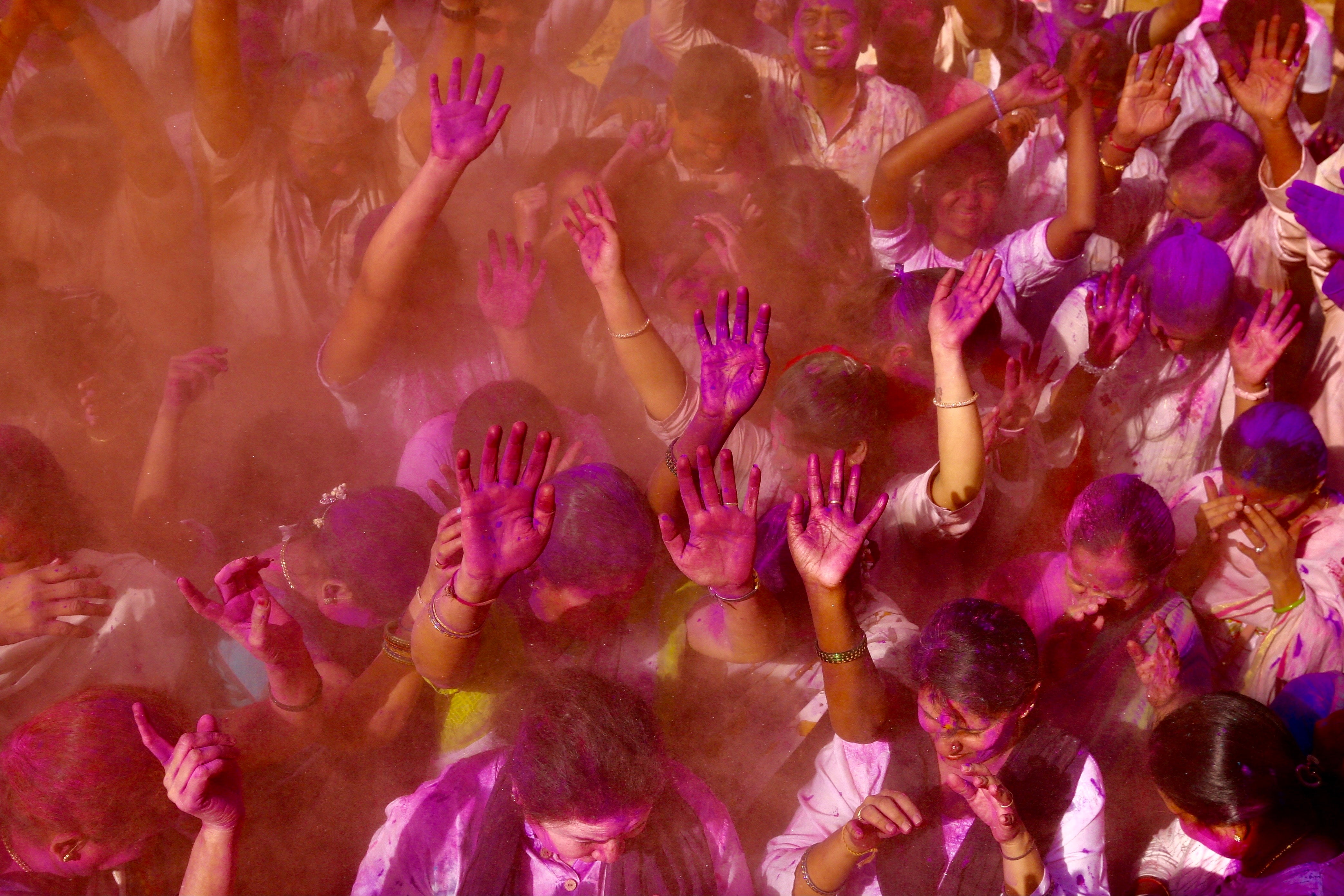
The King Hiranyakashipu believed that everyone should worship him as a god but his son, Prahlada, refused to do so, opting to worship the Hindu god Vishnu instead.
The king and his sister Holika plotted to kill Prahlada and lured him onto a pyre in an attempt to burn him to death. However, Prahlada survived and Holika perished in the flames instead.
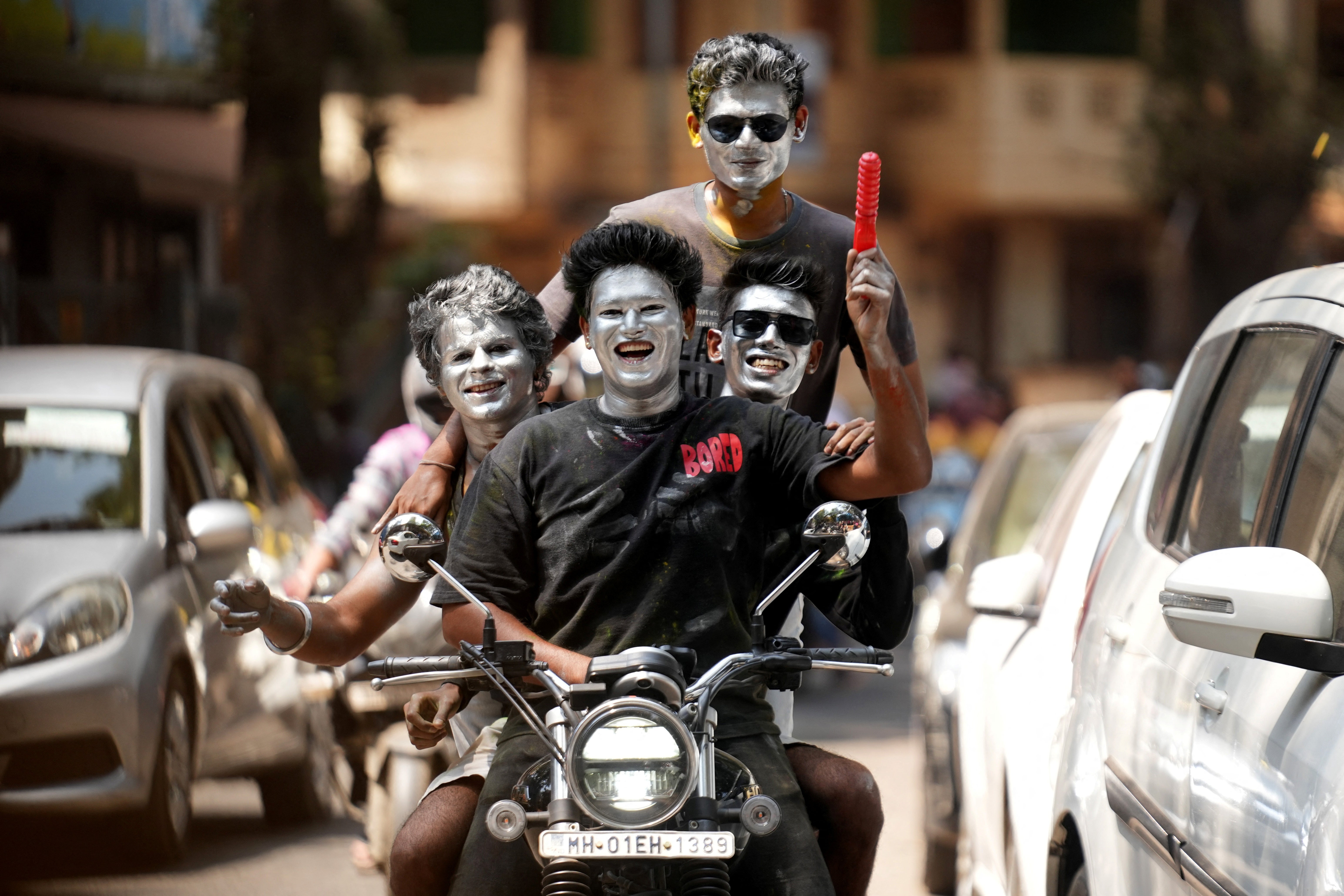
The night before Holi is celebrated by lighting bonfires to signify the burning of Holika and the victory of good over evil. Some Hindus who observe the festival will also smear themselves with ashes from the fire, as a symbol of purification.
Other legends tell the tale of the love shared between the Hindu deities Radha and Krishna, who is frequently depicted with blue skin.
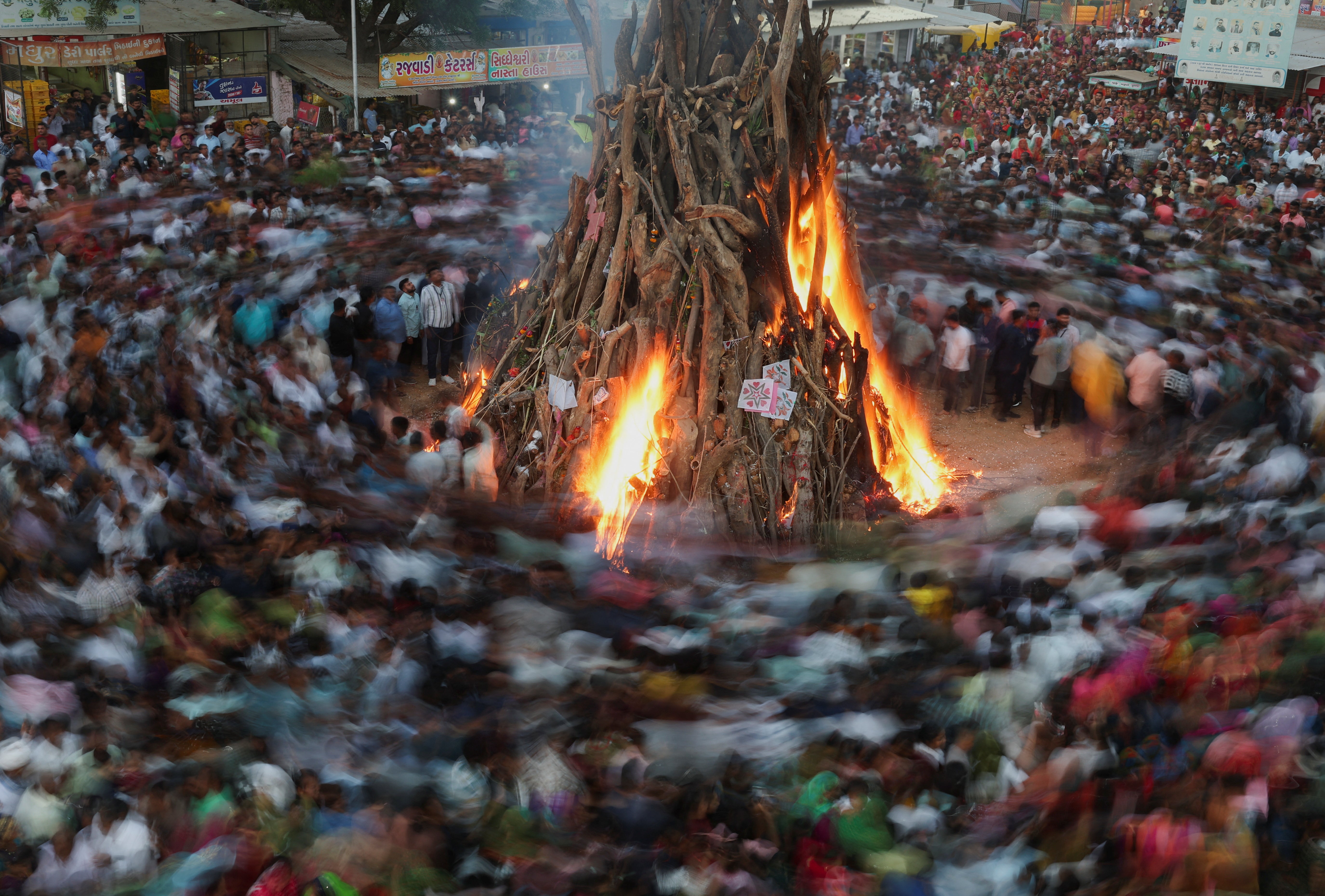
The ancient legend tells how Krishna fell in love with Radha, but was concerned their difference in skin colour would keep them apart. After voicing his concerns, Krishna's mother encouraged him to smear a brightly coloured powder on Radha's face.
In parts of the northern state of Uttar Pradesh – home to the mythology of Radha and Krisha – Holi lasts for nearly 10 days.
In Varanasi in Uttar Pradesh, a two-day Masaan (crematorium) Holi on the banks of the Ganges river draws thousands of people from across the country and beyond.
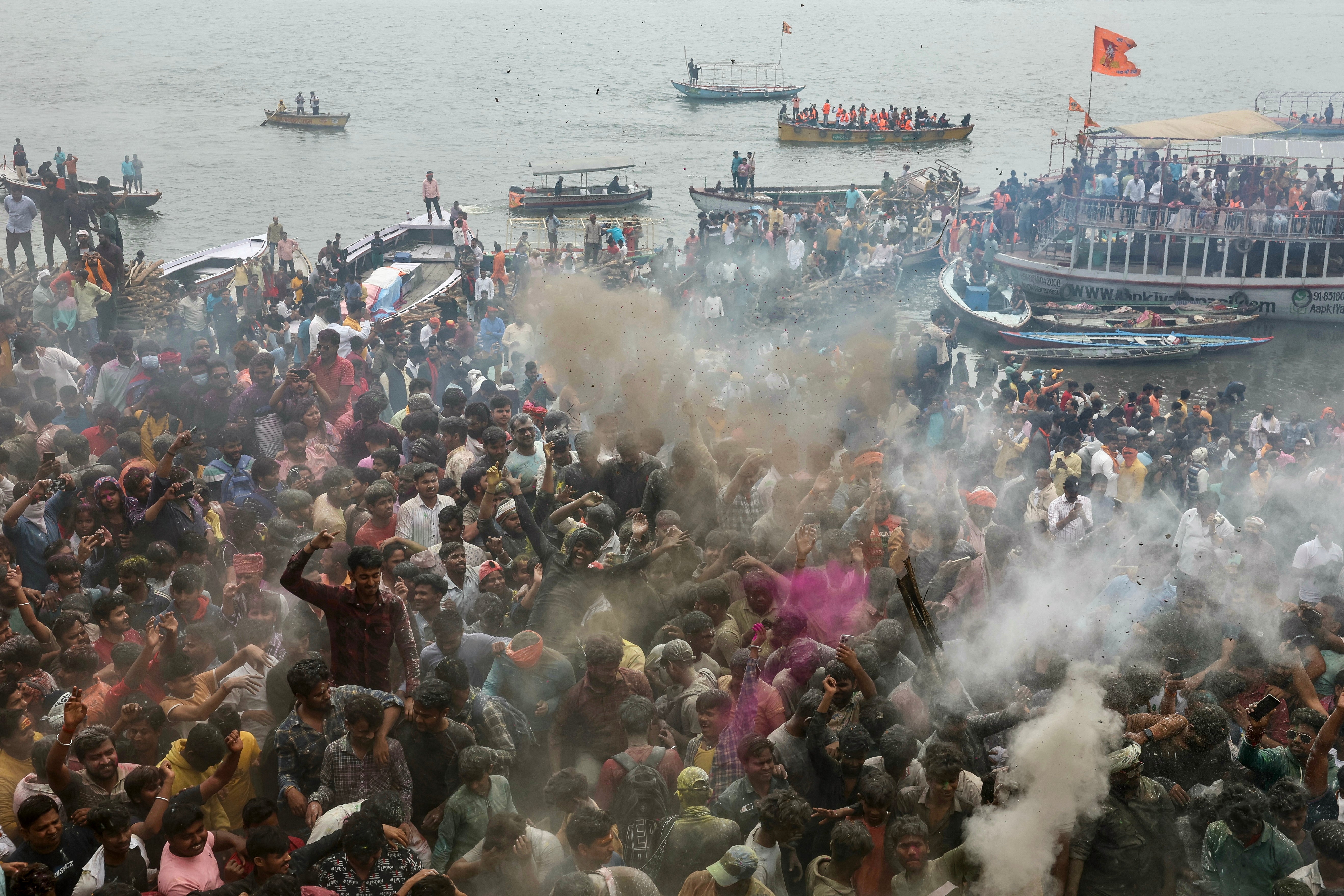
Here devotees and hermits smear the ashes from funeral pyres on each other's face in celebration of death and the Hindu god, Shiva.
The oldest accounts of Holi being commemorated date as far back as the 4th century. It’s celebrated around the world, although the festivities predominantly occur among communities from India and Nepal.
Join our commenting forum
Join thought-provoking conversations, follow other Independent readers and see their replies
0Comments